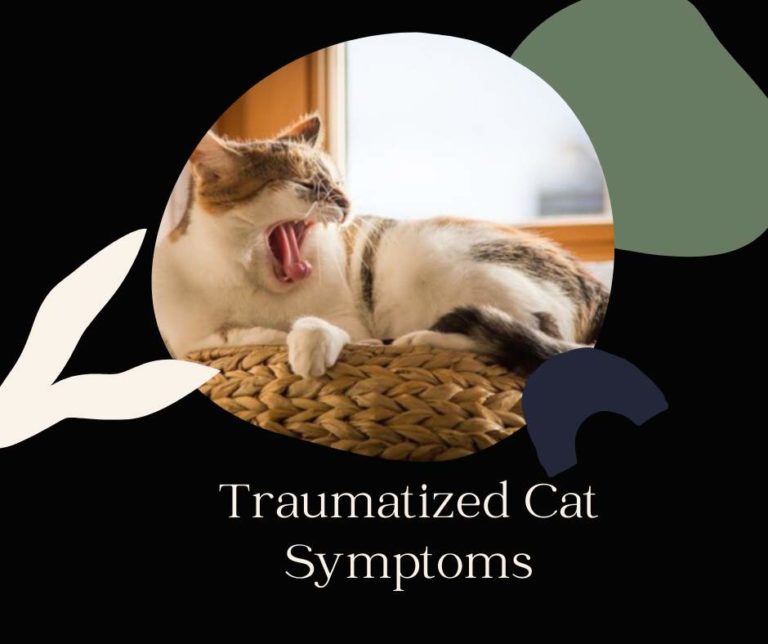How Long Do Cats Usually Live [11 Factors to Consider]
![How Long Do Cats Usually Live [11 Factors to Consider] How Long Do Cats Usually Live](https://petcreeks.com/wp-content/uploads/2023/10/pexels-alina-bystrova-11570743.jpg)
How long do cats usually live? Let’s find out together…
Today, let’s dive into the fascinating world of feline longevity. Have you ever wondered how long our furry companions typically grace us with their presence?
Well, get ready to be amazed as we uncover the average lifespan of cats and discover what factors can influence their journey through life.
How Long Do Cats Usually Live
Cats typically live for 12–15 years, but many can reach their late teens or early 20s with proper care.
Outdoor cats generally have shorter lifespans due to various risks. Indoor cats tend to live longer due to reduced exposure to dangers like traffic and predators.
Regular veterinary check-ups, a balanced diet, and a stress-free environment can contribute to a longer and healthier life for cats.
Cat Stages of Life
Here are the stages of cat life:
Kittens: The Playful Explorers
Kittens are born tiny and helpless, completely dependent on their mother for care.
As they grow, they become the epitome of cuteness, with their playful antics and endless curiosity.
They’re like little balls of energy, bouncing around and getting into everything. This stage is crucial for their development, as they learn vital social and hunting skills through play.
It’s also the time when they form strong bonds with their human family members. Kittens typically wean off their mother’s milk around 8 weeks old and start exploring the world around them.
Adolescence: The Rebellious Teenagers
As kittens grow into adolescents, they enter a phase similar to human teenagers. They become more independent and might test boundaries.
You might notice them becoming more adventurous, exploring the outdoors, and honing their hunting skills.
At this stage, they’re full of energy and enthusiasm, and they may exhibit more mischievous behavior.
It’s important to provide them with plenty of toys and activities to keep them engaged and prevent destructive behavior.
Adulthood: Settling into Routine
Once your cat reaches adulthood, usually around 1 to 7 years old, they start to settle into a more predictable routine.
They may become more affectionate and form strong bonds with their human family.
Some cats might establish favorite spots for lounging and napping, while others may become more territorial.
During this stage, they may exhibit more predictable behavior, and you’ll get to know their likes and dislikes better.
Senior Stage: Embracing Aging
As cats enter their senior years, typically around 7 years and older, they might start to show signs of aging.
Their activity level may decrease, and they might require more rest.
Senior cats often need extra care and attention, including regular veterinary check-ups and potential adjustments to their diet and living environment.
It’s essential to provide them with a comfortable and safe space as they navigate the challenges of aging.
Each stage of a cat’s life brings new joys, challenges, and opportunities for deepening the bond between you and your feline companion.
It’s a privilege to witness and support your cat through each phase as they grow and mature.
Factors Influencing Cat Lifespan
Here are some common factors influencing a cat’s lifespan:
1. Indoor vs Outdoor Cat Living
Indoor Cats:
Indoor cats typically have a longer lifespan due to reduced exposure to various hazards.
By living indoors, cats are shielded from dangers such as traffic accidents, attacks from predators, and infectious diseases transmitted by other animals.
They are also less likely to encounter toxins and harmful substances. Additionally, indoor cats are less prone to getting lost, injured, or stolen.
Outdoor Cats:
Conversely, outdoor cats face a higher risk of accidents, injuries from fights with other animals, and exposure to infectious diseases such as feline leukemia and feline immunodeficiency virus (FIV).
They may also encounter toxic substances such as antifreeze, pesticides, or poisonous plants.
Outdoor cats are more likely to suffer from trauma-related injuries or become prey to larger animals, which can significantly impact their lifespan.
2. Breed Genetics
Purebred Cats:
Purebred cats may have a higher risk of inheriting genetic predispositions to certain health conditions.
For example, breeds such as Persians may be prone to polycystic kidney disease, while Siamese cats may have a higher incidence of asthma.
Responsible breeders work to minimize genetic health issues, but it’s important for potential cat owners to be aware of breed-specific health concerns when selecting a purebred cat.
Mixed-breed Cats:
Mixed-breed cats often benefit from a broader genetic diversity, which can lead to a decreased risk of inheriting specific genetic health issues.
However, mixed-breed cats are not immune to health conditions, and it’s essential for all cats to receive regular veterinary care and attention to maintain their health and well-being.
3. Nutrition
Balanced Diet:
A well-balanced diet rich in essential nutrients, including proteins, fats, vitamins, and minerals, is vital for supporting a cat’s overall health.
Proper nutrition helps maintain a healthy weight, supports the immune system, and contributes to healthy organ function.
High-quality cat food that meets a cat’s specific nutritional requirements is crucial for promoting longevity and well-being.
Obesity and Malnutrition:
Overfeeding and poor diet choices can lead to obesity or malnutrition, both of which can have detrimental effects on a cat’s health and lifespan.
Obesity is associated with a higher risk of diabetes, arthritis, and heart disease, while malnutrition can lead to deficiencies and weakened immune function.
4. Healthcare
Preventive Care:
Regular veterinary check-ups, vaccinations, and parasite control are essential components of preventive care for cats.
Routine examinations can help detect and address health issues early, preventing them from progressing into more serious conditions.
Vaccinations protect cats from infectious diseases, while parasite control helps prevent infestations that can negatively impact a cat’s health.
Prompt Treatment:
Timely intervention and treatment of health issues are crucial for maintaining a cat’s well-being and extending their lifespan.
Prompt attention to symptoms, early diagnosis, and appropriate treatment can prevent minor health concerns from escalating into more severe conditions, ultimately contributing to a longer and healthier life for cats.
5. Spaying or Neutering
Spaying or neutering your cat can have a positive impact on their overall health and lifespan.
Spaying (for females) and neutering (for males) can reduce the risk of certain cancers and infections in the reproductive system.
For female cats, spaying can prevent uterine infections and mammary tumors, while for male cats, neutering can decrease the risk of testicular cancer and prostate problems.
Additionally, spaying or neutering can help reduce roaming behavior, which can decrease the chances of your cat getting into fights or accidents.
Overall, spaying or neutering can contribute to a longer, healthier life for your cat.
6. Health Conditions
Cats, like all living beings, can be susceptible to a variety of health conditions that can impact their lifespan.
Regular veterinary check-ups are crucial for early detection and management of health issues.
A balanced diet tailored to your cat’s specific needs, along with proper hydration, exercise, and mental stimulation, can also play a significant role in maintaining your cat’s health.
Preventive measures such as vaccinations and parasite control are important for protecting your cat from infectious diseases and parasites that can impact their well-being.
7. Environment Factors
The environment in which a cat lives can greatly impact their lifespan. Indoor cats generally have a longer lifespan than outdoor cats due to reduced exposure to dangers such as traffic, predators, and communicable diseases.
Creating a stimulating indoor environment with plenty of opportunities for exercise, mental stimulation, and social interaction can help maintain your cat’s physical and emotional well-being.
Additionally, ensuring a safe and secure outdoor space, if available, can provide enrichment while minimizing risks.
8. Stress Levels
Stress can have a significant impact on a cat’s overall health and lifespan. High stress levels can weaken the immune system, making cats more susceptible to illnesses.
Cats are sensitive to changes in their environment, routine, and social dynamics. Factors such as introducing new pets, moving to a new home, or changes in household dynamics can contribute to stress.
Providing a stable and predictable routine, a safe and comfortable living environment and plenty of mental and physical stimulation can help mitigate stress and promote a longer and happier life for your cat.
9. Parasite Control
Parasite control is crucial for maintaining a cat’s health and well-being.
External parasites such as fleas and ticks can carry diseases and cause discomfort for cats, leading to skin irritation, anemia, and in severe cases, transmitting serious illnesses.
Internal parasites like worms can also cause significant health issues, affecting a cat’s digestive system and overall vitality.
Regular use of flea and tick preventatives, deworming treatments, and routine check-ups with a veterinarian are essential for effective parasite control and to minimize the risk of parasitic infestations that could potentially impact a cat’s lifespan.
10. Weight Management and Exercise
Weight management and exercise are key components of a cat’s overall health.
Obesity in cats can lead to a variety of health problems, including diabetes, joint issues, and heart disease, which can ultimately reduce their lifespan.
Providing appropriate portions of high-quality, balanced nutrition and engaging cats in regular play and exercise helps maintain a healthy weight and keeps their muscles and joints in good condition.
Interactive toys, scratching posts, and interactive play sessions with their owners are great ways to keep cats active and mentally stimulated, contributing to their overall well-being and potentially extending their lifespan.
11. Quality of Life in Senior Years
As cats age, their needs change, and it’s important to focus on maintaining their quality of life during their senior years.
Regular veterinary check-ups become even more crucial to monitor for age-related health issues such as kidney disease, dental problems, and arthritis.
Providing a comfortable and safe environment, including soft bedding, easy access to food and water, and warm places to rest, is essential to support their aging bodies.
Additionally, adjusting their diet to meet their changing nutritional needs and providing gentle exercise opportunities help to ensure that they remain healthy and content in their senior years, positively impacting their overall lifespan.
Ways of Helping a Cat Live Longer and Healthy
Here are some common ways of helping a cat live longer and healthy:
1. Balanced Diet: Providing a well-balanced diet is crucial for your cat’s health. Feed them high-quality cat food that meets their nutritional needs. Consult with your vet to determine the appropriate portion sizes and feeding schedule based on your cat’s age, weight, and any specific dietary requirements.
2. Hydration: Make sure your cat has access to fresh water at all times. Consider providing a water fountain to encourage them to drink more. Adequate hydration helps maintain healthy kidney function and prevents urinary tract issues.
3. Regular Veterinary Care: Regular check-ups with a veterinarian are essential for early detection and prevention of health issues. Schedule annual or biannual visits for vaccinations, dental cleanings, and overall wellness exams. Your vet can also provide advice on parasite control.
4. Exercise and Mental Stimulation: Engage your cat in regular play sessions to keep them physically active and mentally stimulated. Use interactive toys, scratching posts, and climbing structures to provide outlets for their natural instincts. Exercise helps maintain a healthy weight and prevents behavioral problems.
5. Litter Box Maintenance: Ensure that the litter box is clean and easily accessible to your cat. Regularly scoop out waste and change the litter to prevent urinary tract infections and maintain good litter box habits.
6. Dental Care: Dental hygiene is often overlooked but plays a crucial role in your cat’s overall health. Brush your cat’s teeth regularly using cat-friendly toothpaste and a soft toothbrush. This helps prevent dental diseases, which can lead to other health issues.
7. Environmental Enrichment: Create a stimulating environment for your cat. Provide scratching posts, hiding spots, perches, and interactive toys. This enriches their lives, reduces stress, and prevents boredom-related behaviors.
8. Stress Reduction: Minimize stressors in your cat’s environment. Cats are sensitive to changes, so provide a stable and predictable routine. Provide hiding spots and vertical spaces where they can feel safe and secure.
9. Spaying/Neutering: If your cat is not intended for breeding, consider spaying or neutering. This procedure not only helps control the cat population but also reduces the risk of certain cancers and eliminates certain behavioral issues.
Frequently Asked Questions
How long do cats typically live?
On average, cats live between 12 and 16 years. However, it’s not uncommon for cats to live into their late teens or even early twenties with proper care and a healthy lifestyle.
What factors can affect a cat’s lifespan?
Several factors can influence a cat’s lifespan. Genetics, breed, diet, exercise, veterinary care, and overall health play significant roles. Indoor cats tend to live longer than outdoor cats due to reduced exposure to dangers such as accidents, predators, and diseases.
Do male and female cats have different lifespans?
In general, there is no significant difference in lifespan between male and female cats. However, individual factors like genetics and overall health are more influential in determining a cat’s lifespan.
Can cats live longer with proper care?
Absolutely! Providing your cat with a balanced diet, regular veterinary check-ups, vaccinations, dental care, and a safe, enriched environment can significantly extend their lifespan. Additionally, spaying or neutering your cat helps prevent certain diseases and unwanted behaviors.
Are there any cats known for longer lifespans?
While there are no guarantees, some cat breeds are known to have a longer average lifespan. These include the Siamese, Burmese, Russian Blue, and Maine Coon. However, it’s essential to remember that individual cat health and care are still the primary factors.
What signs indicate that a cat is aging?
Just like humans, cats show signs of aging as they grow older. These signs may include decreased activity, weight loss or gain, changes in appetite, dental issues, stiff joints, and a decline in sensory functions. Regular veterinary check-ups can help identify and manage age-related health conditions.
Conclusion
In conclusion, our feline friends have the amazing ability to grace our lives with their presence for an average of 15 years.
However, with proper care, love, and attention, some cats can surpass this milestone and live well into their late teens or even early twenties.
So, cherish every precious moment with your furry companion and make their years truly purr-fect!


![How to Keep Outdoor Cats Warm in Winter [10 Hints] How to Keep Outdoor Cats Warm in Winter](https://petcreeks.com/wp-content/uploads/2023/10/pexels-aleksandr-nadyojin-7335655.jpg)



![Why Do Cats Hang Around My House [9 Top Reasons] Why Do Cats Hang Around My House](https://petcreeks.com/wp-content/uploads/2023/10/arteida-mjeshtri-XoXHijkYhPo-unsplash.jpg)